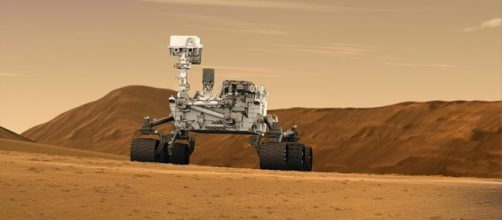Is Mars habitable?
After arriving on Mars on August 5, 2012, Mars Science laboratory mission with its rover named Curiosity will intend to prove the possibility that Mars could have an environment suitable to support the development of microscopic life forms, such as microbes. The overall mission is to determine the likelihood that Mars could be habitable for life forms, including terrestrial animals and humans.
Advanced instruments
Equipped with the most advanced sets of scientific equipment, the rover obtains soil and rock samples that are analyzed on the rover´s on board laboratory.
The aim of this study is to determine the forms or carbon which could be present in the samples. This will give important information about the planet´s past climate and geological evolution.
It also carries a mast camera and a hands lens camera, as well as spectrometers; chemistry and mineralogy X-ray and diffraction X-ray fluorescence instrument. Radiation detectors, including the radiation assessment detector (RAD) and dynamic abedo of neutrons (DAN). It´s also equipped with atmospheric sensors, which will allow to design systems more reliable for future entry into Mar´s atmosphere.
Landing on Mars
Curiosity landed on Mars on August 5, 2012. It descended on a parachute and during the last seconds before touching the Martian surface, it was lowered by another robotic crane.
On the Martian surface, the rover will be able to travel 90 meters (295 ft.) per hour and avoid obstacles of up to 75 cm (29 inches); however, because of the rough surface in Mars, the rover is only expected to advance 30 meters (98 feet) every hour.
What powers the rover?
Curiosity is equipped with a system that produces electricity from the heat generated by the radioactive decay of plutonium. The power system is intended to generate sufficient electricity for the rover´s operability for the span time of approximately two years, which is more than a Martian year (687 days).
Future exploration
Mars Science Exploration (Curiosity) will open the possibilities for future exploration on Mars. The success of this first landing on Mars enhances the possibilities for heavier spacecraft landings on Mars; it enhances the chances of landing in a very precise point on the planet and it also proves that the displacement over a long range for collecting and studying Mars samples is possible.

